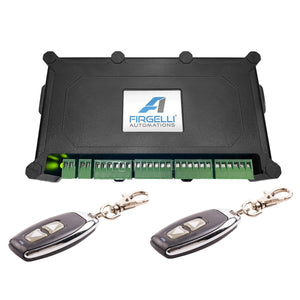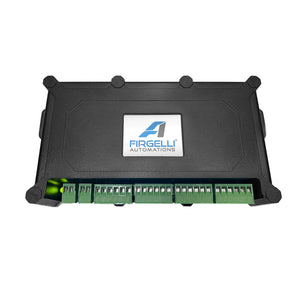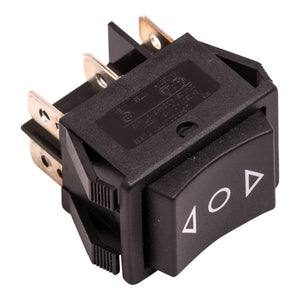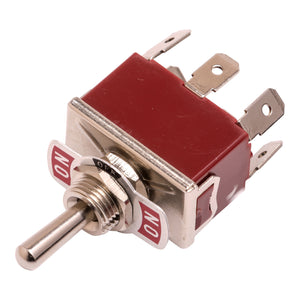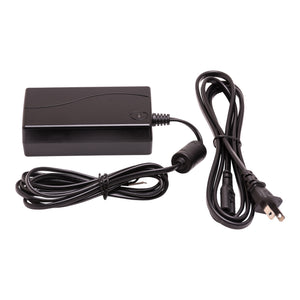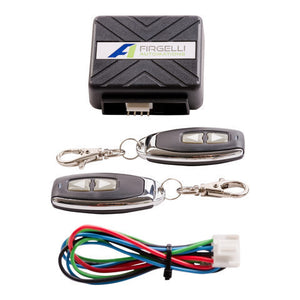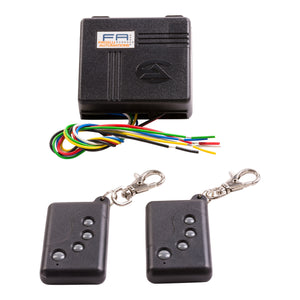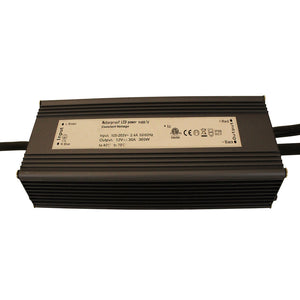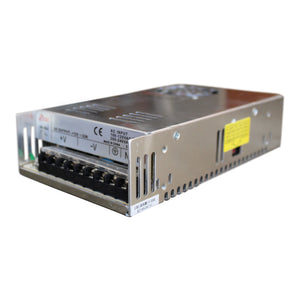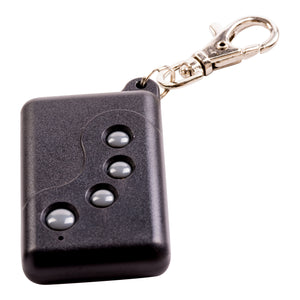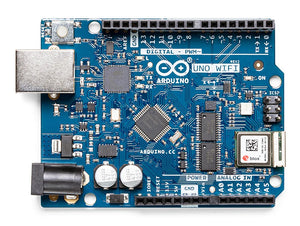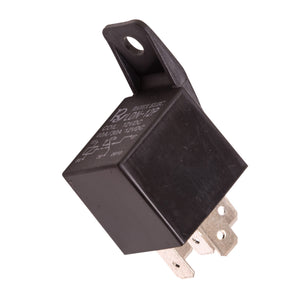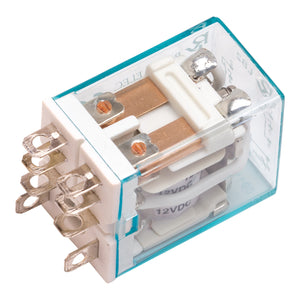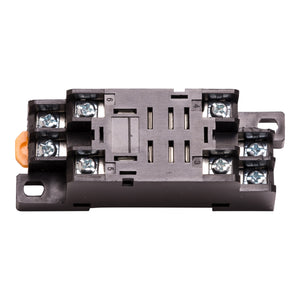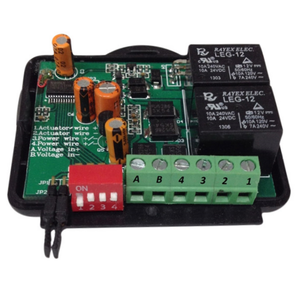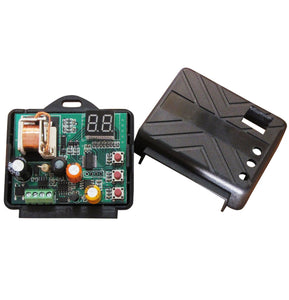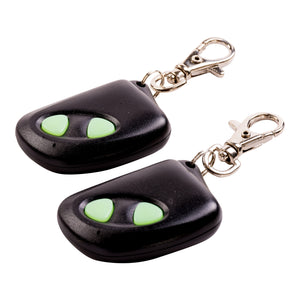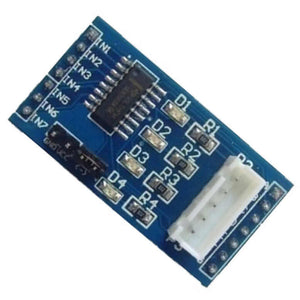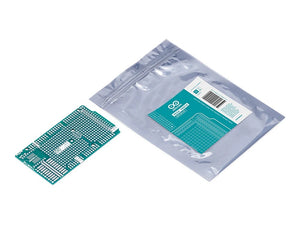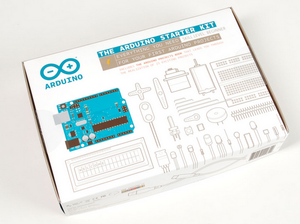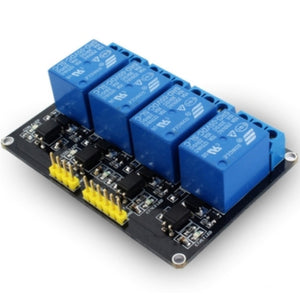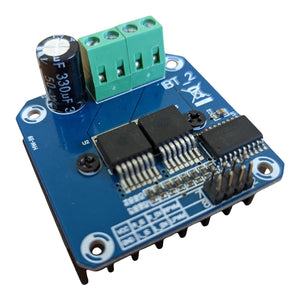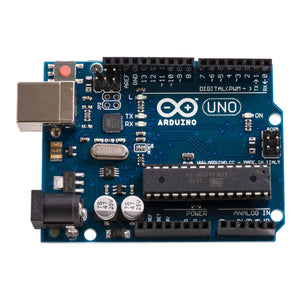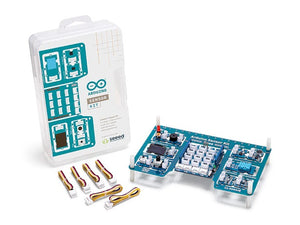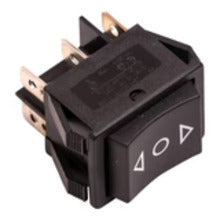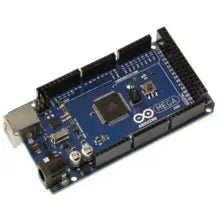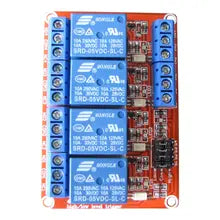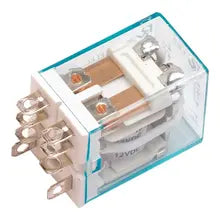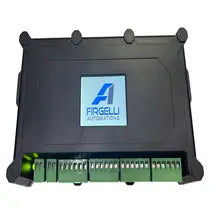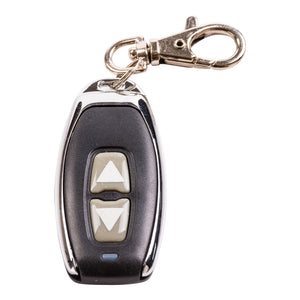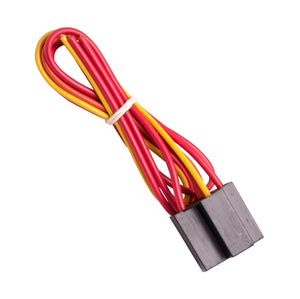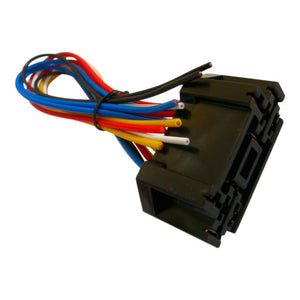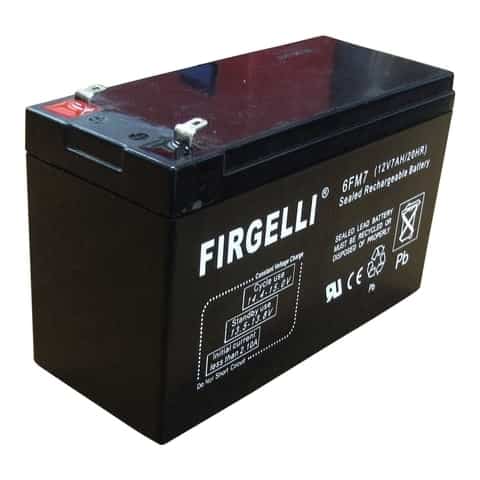If you need to run 2-4 linear actuators in perfect synchronization, then you will need a control board. For this feature to work you will need to be using linear actuators that have feedback. Apart from the ability to synch linear actuators movement, our control board offers a range of beneficial features for your application, including adjusting actuator speed, customizing start and stop positions, and implementing timer controls for scheduled activation. For further details, explore our synchronous control board.
To control a linear actuator with an Arduino, you'll first need an intermediate component to interface between the actuator and the Arduino. The most commonly used component for this purpose is a relay. Connect the Arduino to two single-pole double-throw relays, which are used to control the polarity of the voltage applied to the linear actuator, enabling its extension and retraction.
In our setup example, we also attach two buttons to the Arduino to facilitate the control of the actuator's movement. You'll need to write code to assign each button press to activate the corresponding relay coil, which, when energized, causes movement in the linear actuator.
For a visual explanation of our setup and more detailed information, watch our video tutorial. Additionally, we have a blog post dedicated to this subject for further reference.
Actuator switches are components designed to facilitate the control of linear actuators. They provide a method to manage the extension and retraction of actuators, offering precise movement.
Typically, actuator switches consist of buttons or switches that, when pressed or toggled, send signals to the actuator's control system. This system then interprets these signals to initiate the desired action, such as extending or retracting the actuator.
For example, pressing the "up" button on an actuator switch signals the actuator's control system to extend the actuator to the desired position. Pressing the "down" button initiates the retraction process, returning the actuator to its original position.
The direction of movement can be easily customized based on how the actuator switch is wired, allowing for versatile applications across various industries and projects.
For a visual explanation of our setup and more detailed information, watch our video tutorial. Additionally, we have a blog post dedicated to this subject for further reference.
Actuator relays are components used to control linear actuators by receiving a signal, typically a pulse signal, from another device. These relays are crucial for precise and efficient control over actuator systems. They operate with a 12V DC signal, which triggers the relay to activate and initiate movement in the actuator.
Relays come in various configurations, including Double Pole Double Throw (DPDT), Single Pole Single Throw (SPST), and Single Pole Double Throw (SPDT). Each type offers different levels of control, allowing users to achieve precise movement tailored to their application requirements.
In operation, when the relay receives a signal, it switches the flow of current, effectively controlling the actuator's extension or retraction. This enables users to exert control over the actuator's movement based on their specific needs.
We go more into detail in our blog post on the subject. Additionally a video on linear actuator relays is below.

